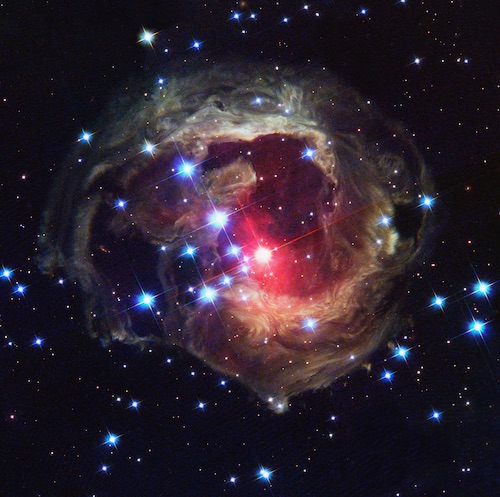Hubble celebrates 30 years of science – Astronomy Magazine
In January 2002, the star at the center of this image flared to became one of our galaxy’s most luminous suns. This view from October 2004 captures surrounding shells of dust lit up by the eruption.
NASA/ESA/The Hubble Heritage Team (STScI/AURA)
Planetary weather satellite
When people think of Hubble, most picture stunning images of Milky Way nebulae and colorful galaxies. But scientists often set their sights closer to home. No spacecraft has visited Uranus or Neptune since the 1980s, leaving Hubble and large ground-based telescopes to take up the slack. The space telescope has shown Uranus, which appeared as a bland, bluish ball when Voyager 2 flew past in 1986, to be an active world boasting bright clouds of methane. And in Neptune’s atmosphere, Hubble has tracked massive storms, some as big as Earth, propelled by winds that average 900 mph (1,450 km/h).
Hubble also has tracked storms on Jupiter and Saturn, augmenting observations made by orbiting spacecraft. And it was the space telescope that first detected evidence that water vapor may be erupting from Jupiter’s moon Europa. The plumes likely represent material from an underground ocean venting through the moon’s icy crust.
Hubble played a key role in the success of NASA’s New Horizons’ mission to Pluto. Between 2005 and 2012, the orbiting observatory discovered four new targets for New Horizons: the small moons Hydra, Nix, Kerberos, and Styx. But, more importantly, observations made over several years mapped light and dark regions on the dwarf planet’s surface. The brightest of these areas so intrigued New Horizons scientists that they targeted the flyby so it would be front and center at closest approach in July 2015. That’s how we learned so much about the heart-shaped, nitrogen-ice glacier now known as Tombaugh Regio. Hubble also discovered the Kuiper Belt object 2014 MU69, since named Arrokoth, that New Horizons flew past January 1, 2019.






